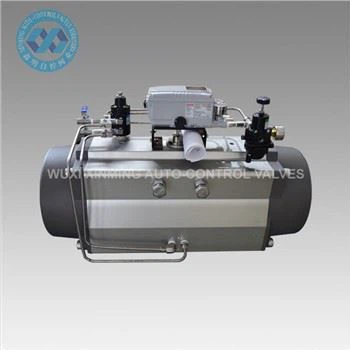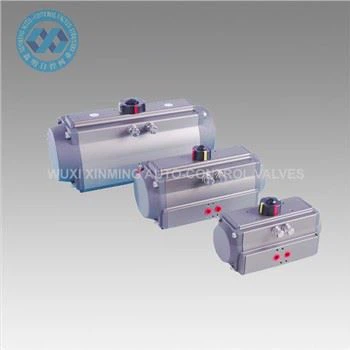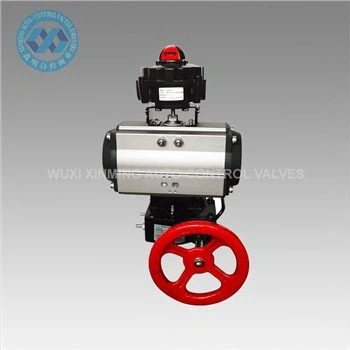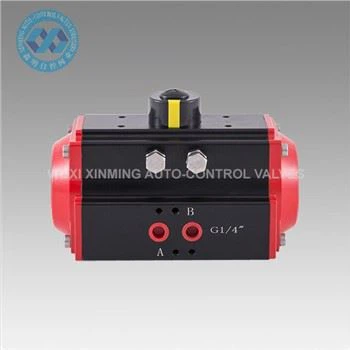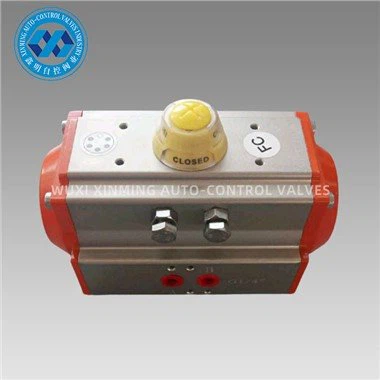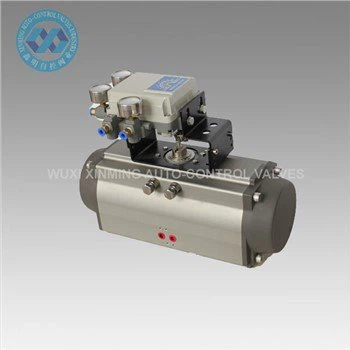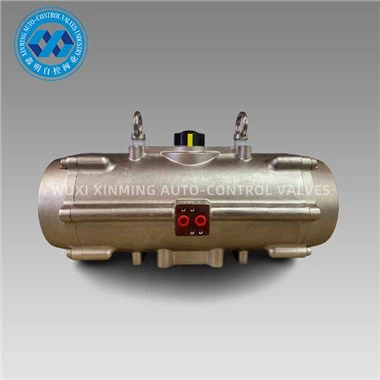1. Introduction
Vane-type rotary actuators are a class of pneumatic or hydraulic actuators that convert fluid pressure into limited angular motion (typically 90°, 180°, or 270°). They are widely used in industrial automation, valve actuation, and robotics due to their compact design, high torque output, and rapid response. This article examines their working principle, design considerations, advantages, and key applications.
2. Vane Type Rotary Actuator Working Principle
A vane-type rotary actuator consists of:
- Housing (Stator): A cylindrical chamber containing the rotating vane.
- Vane (Rotor): A movable partition that divides the chamber into two pressure chambers.
- Shaft: Transmits torque to the external load.
- Seals: Prevent fluid leakage between chambers.
Operation:
- Pressurization: Compressed air or hydraulic fluid enters one chamber, forcing the vane to rotate.
- Rotation: The vane moves until it reaches the mechanical stop (e.g., 90° or 180°).
- Return Motion: Reversing the fluid supply direction rotates the vane back to its original position.
3. Design Considerations
3.1 Torque & Angular Displacement
-
Torque is proportional to:
- Pressure (P)
- Vane surface area (A)
- Radius (R) (distance from shaft center to vane edge).
- Angular displacement is limited by the actuator’s internal stops.
3.2 Sealing & Lubrication
- Dynamic seals must minimize friction while preventing leaks.
- Common materials: Nitrile rubber (NBR), fluorocarbon (FKM), or PTFE.
- Lubrication (for pneumatic actuators) extends seal life and reduces stiction.
3.3 Materials & Construction
- Housing: Aluminum (lightweight), stainless steel (corrosion resistance).
- Vane: Often made of composite materials or coated metals for durability.
3.4 Cushioning (Optional)
- Some actuators feature adjustable end-cushioning to reduce impact at rotation limits.
4. Advantages & Limitations
Advantages:
✔ Compact & lightweight compared to rack-and-pinion designs.
✔ High torque-to-size ratio due to direct vane actuation.
✔ Fast response times (suitable for high-cycle applications).
✔ No external gears (reduced backlash).
Limitations:
✖ Limited rotation angle (usually ≤ 270°).
✖ Potential seal wear over time, requiring maintenance.
✖ Lower precision compared to electric servo actuators.
5. Applications
- Valve Actuation: Quarter-turn ball valves, butterfly valves.
- Industrial Automation: Part positioning, clamping, indexing tables.
- Robotics: Gripper rotation, limited-motion joints.
- Aerospace: Landing gear deployment, flap adjustments.
6. Future Developments
- Smart Actuators: Integration with sensors for predictive maintenance.
- Improved Seals: Longer-lasting materials for harsh environments.
- Hybrid Designs: Combining pneumatic vane actuators with electric control for precision.
7. Conclusion
Vane-type rotary actuators offer an efficient solution for applications requiring compact, high-torque rotary motion. Their simplicity and reliability make them ideal for pneumatic and hydraulic systems, though seal durability remains a key focus for improvement. Engineers should evaluate pressure requirements, cycle life, and environmental conditions when selecting a vane actuator.
If you want to learn more about low-priced products, please visit the following website: www.xm-valveactuator.com


